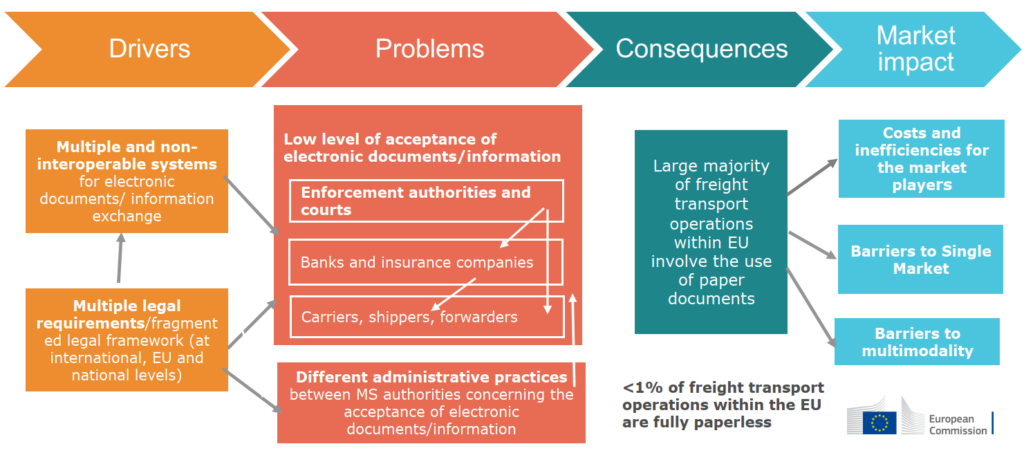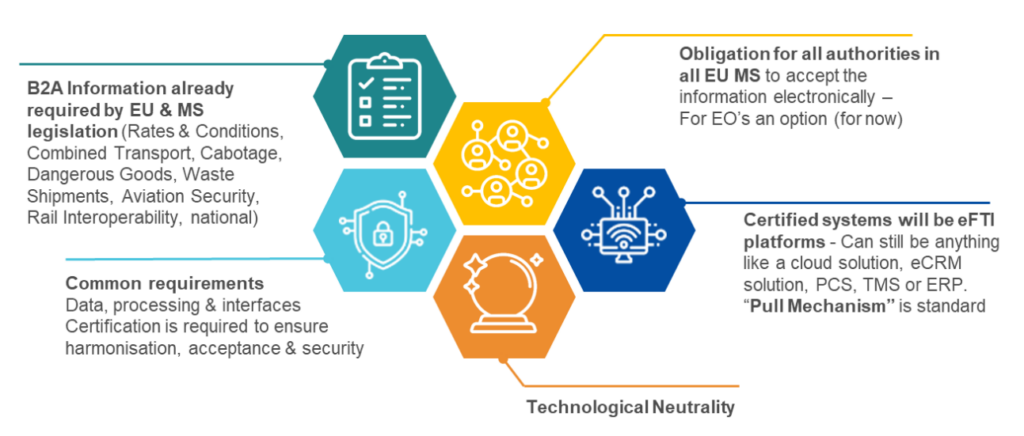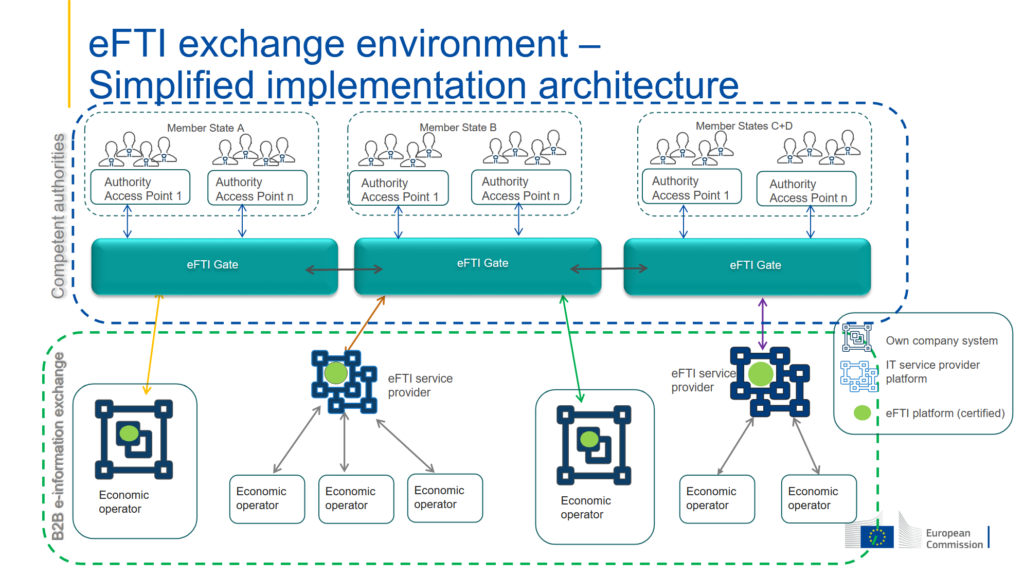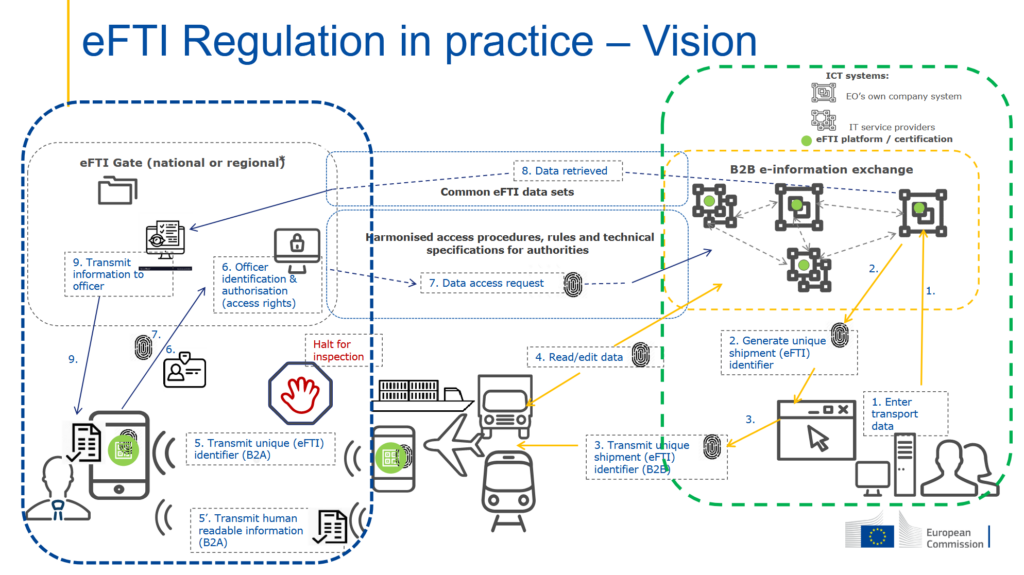Introduction to the eFTI Regulation

A quick shift from paper to electronic documents is a great opportunity for both businesses and
government authorities to gain efficiency and transparency. Almost 99% of all cross-border
transport operations in the EU still involve paper-based Consignment Note (CMR) at one stage or
another. The digitalisation and trusted sharing of road freight data is a key solution for increasing
the transport process transparency, reducing the administrative burden and mitigating negative
environmental impacts.
On the 15th of July 2020, the European Parliament and the Council of the European Union (EU)
approved the new Regulation on electronic freight transport information (eFTI)1. The aim of this
Regulation is to encourage the digitalisation of freight transport and logistics to reduce
administrative costs, improve enforcement capabilities of competent authorities, and enhance the
efficiency and sustainability of transport.
In order to quickly provide a fully interoperable system for the safe and secure exchange of freight
information between businesses and authorities, we stress the need to strengthen cooperation
towards an electronic Consignment Note (e-CMR) data exchange scheme that will allow cross-
border control of digital transport documents in a secure and trustable way.



Step 1: The process starts by entering the transfer data.
Step 2: The transport data is used to create a unique cargo ID via eFTI (digital bill of lading).
Steps 3-4: The identifier is then shared between businesses (B2B) and read/processed according to business needs.
Step 5: The identifier is forwarded when requested to the competent control authorities (B2B) together with the necessary information.
Step 6: The responsible official then uses the authorised identification and his/her rights to request access to the data to access the system.
Steps 7-9: The system retrieves the relevant data and transmits it back to the official, completing the process.
